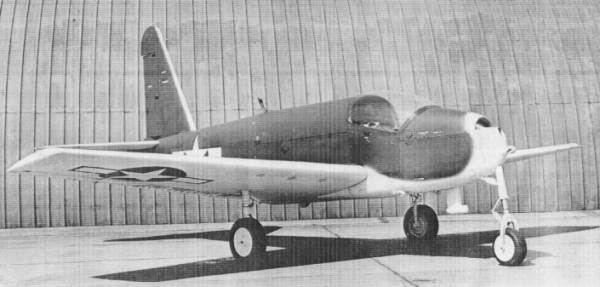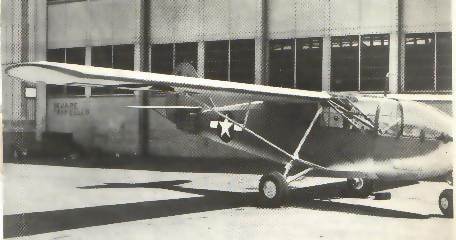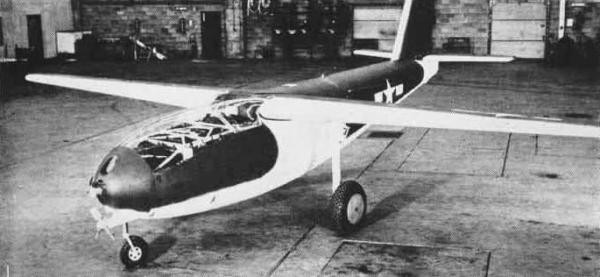LB Series
(LBD, LBE, LBP, LBT)
In December 1940, the concept of remotely controlled unmanned bomb-carrying gliders was proposed to the U.S. Navy, and in April 1941, the Bureau of Aeronautics (BuAer) began a program to study the feasibility of such weapons. The projected gliders were generally called Glomb for "Glider-Bomb". It was planned that a standard carrier-based attack aircraft would tow a Glomb into action, and after release the bombardier would use imagery transmitted by a TV camera in the glide bomb's nose to direct it to the target via radio commands.
The general principles of Glomb guidance and operation were tested during 1942/43 by converting various readily available training and transport gliders to unmanned configuration. The tested aircraft included the Taylorcraft XLNT-1 (ex USAAF TG-6), the Piper XLNP-1 (ex TG-8), the Aeronca XLNR-1 (ex TG-5), and the Waco XLRW-1 (ex CG-4A). Of these, the XLNT-1 design was judged to be best suited to the Glomb role. However, for the projected operational Glomb, the Naval Aircraft Factory designed a new airframe with structural improvements and optimized for slightly higher towing speeds. In September 1943, a contract for production of this Glomb design was awarded to Pratt-Read (Gould) for the LBE-1, which was to carry 1800 kg (4000 lb) of explosives (some sources quote 900 kg (2000 lb)).
 |
| Photo: U.S. Navy |
| LBE-1 |
At the same time, Glomb production contracts were also awarded to Piper (for the LBP-1) and Taylorcraft (for the LBT-1). The LBP-1 was to carry 1800 kg (4000 lb) of explosives, while the LBT-1 would carry a warhead of only 900 kg (2000 lb). Interestingly, many available sources give contradicting information about the configuration of the LBT-1. While several sources state that the LBT-1 was identical to the LBE-1, it is also indicated that the LBT-1 was derived from the original XLNT-1 glider. Given the photo of the LBE-1, this clearly can't both be true. In fact, the photo below has now been identified as an LBT-1, which proves that the LBT-1 was indeed superficially similar (but different in most details) to the XLNT-1.
 |
| Photo: via Jos Heyman |
| LBT-1 |
The LBP-1 was generally similar to the LBE-1, but used a high wing.
 |
| Photo: Naval Aviation News |
| LBP-1 |
By 1944 the inherently low performance of the Glomb concept and difficulties with the TV system began to affect the program. The LBT production was terminated in October 1944, and the orders for the LBE and LBP were gradually reduced from 100 each to 35 in February 1945. In the end, the LBP and LBE production plans were also cancelled in June and August 1945, respectively. In total, only four LBE-1 and 25 LBT-1 Glombs were completed, and none of them were ever used operationally.
The LB series had one more member, the McDonnell LBD-1 Gargoyle. The LBD-1 was an air-dropped glide bomb and is described under its final designation of RTV-N-2.
Specifications
I have no data about the exact physical characteristics of the LBE-1, LBP-1 and LBT-1 designs.
Main Sources
[1] Norman Friedman: "US Naval Weapons", Conway Maritime Press, 1983
[2] Frederick I. Ordway III, Ronald C. Wakeford: "International Missile and Spacecraft Guide", McGraw-Hill, 1960
[3] "Pilotless Aircraft", article in
Naval Aviation News, January 1946
Back to Directory of U.S. Military Rockets and Missiles, Appendix 1
Last Updated: 9 March 2005